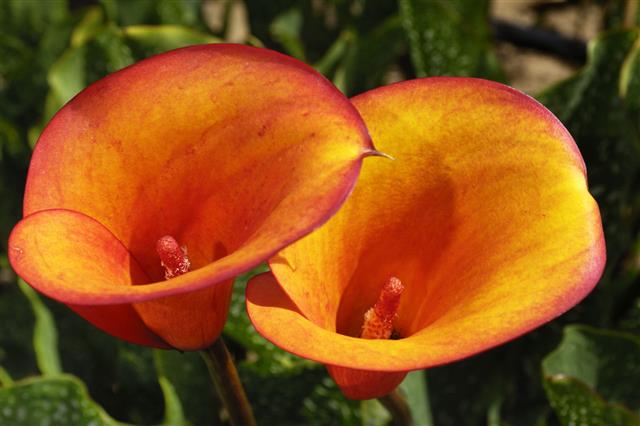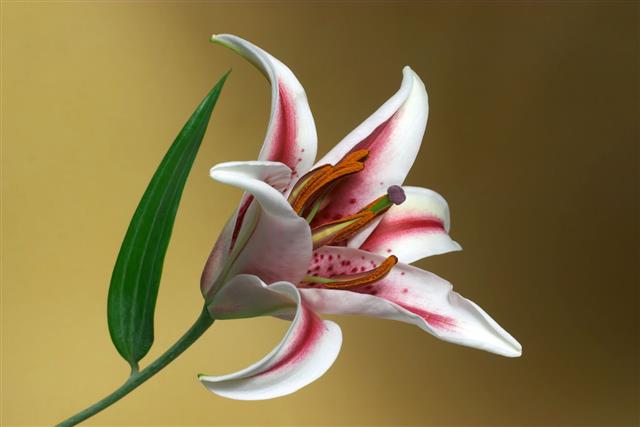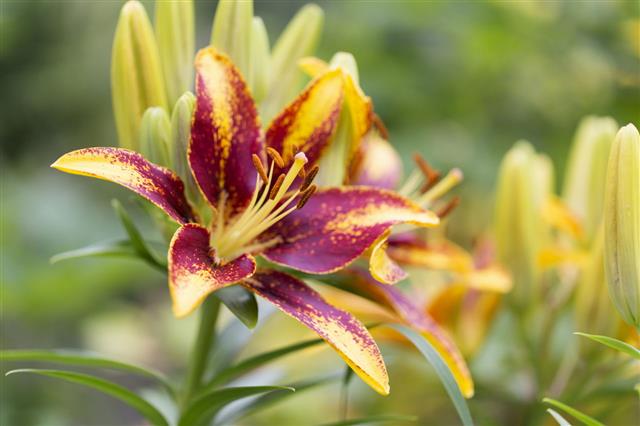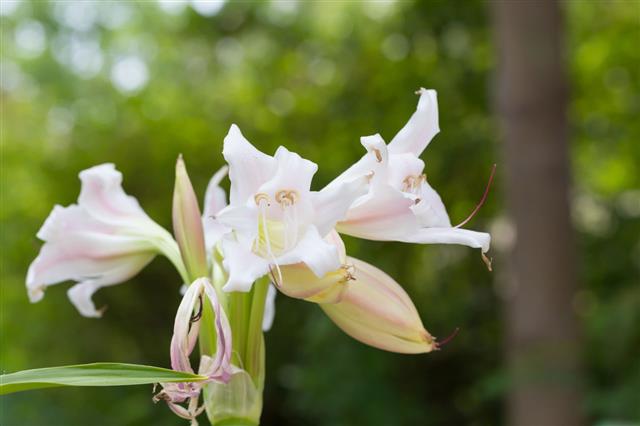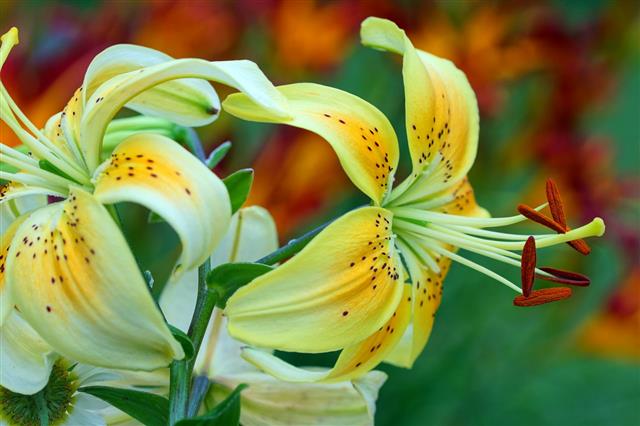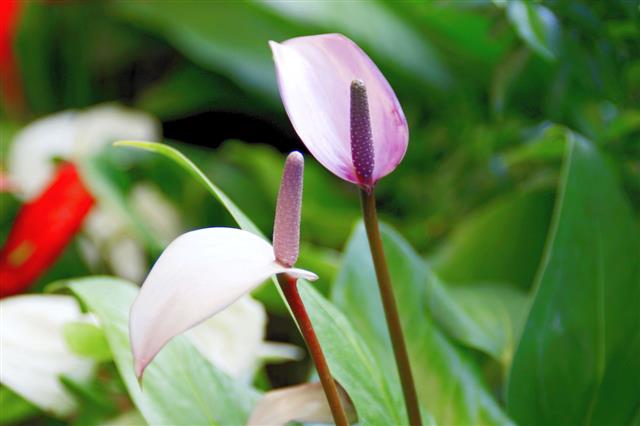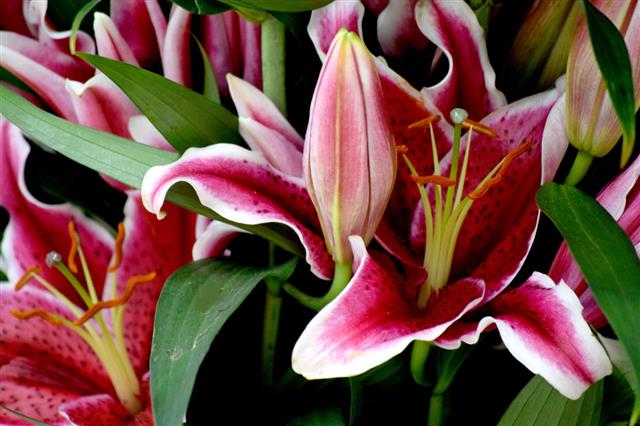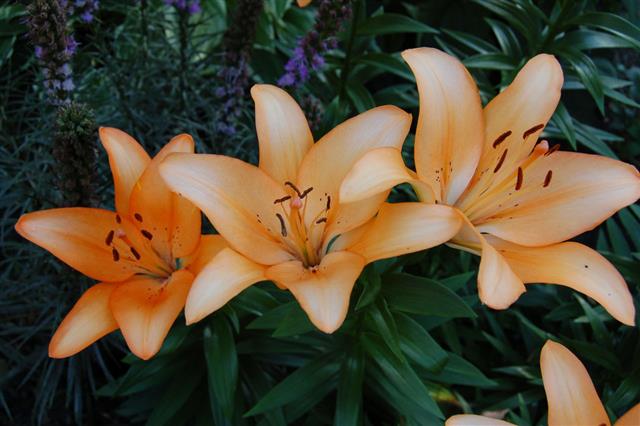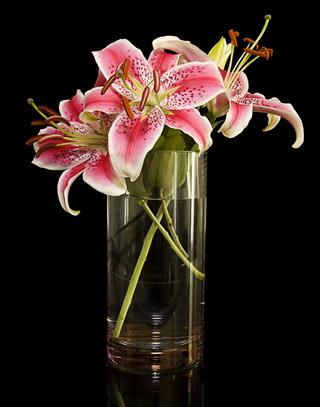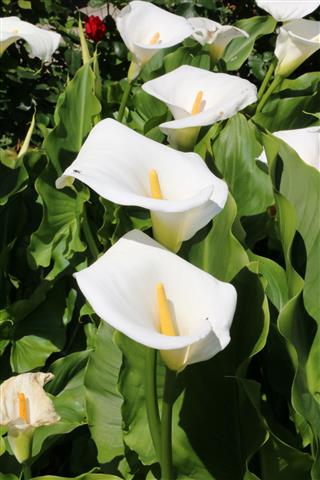
Lilies are an incredibly beautiful plant species that come in vibrant or subtle hues, and eye-catching structures that are a sight for sore eyes in any garden. There are all sorts of lilies out there that belong to the same family but aren’t in fact related in any way. Strange, but true.
While the word lily is used loosely by those who aren’t familiar with the different kinds of genus, it is in fact true that some lilies have a little semblance to one another, but not entirely. This is misleading no doubt, but once you understand how the families differ, you’ll know better when separating their kind.
Lilies that fall under the genus Lilium are represented with an L. or the word Lilium itself, before its scientific name. For example: L. longiflorum, or Lilium longiflorum. Using an alphabetical representation preceding the scientific flower name is what helps researchers and others, set them apart. For a lily that doesn’t belong to the Lilium genus, another alphabet is set in its place, example: H. coccinea (river lily), or hesperantha (genus) coccinea.
List of the Different Types of Lilies
There is a slight likeness to lilies that belong to other groups, where Lilium lilies are easily spotted for their brilliant colors and imposing presence. Depending on the shape of the lily and its parentage, a classification system has been defined to place the Lilium flowers in their rightful categories. The groups differ when it comes to how the varied lilies look, what they need in order to sustain themselves when planted, and which seasons they bloom.
Martagon Group
Purple Turk’s Cap Lily
Turban Lily/ Sultan Lily
These speckled beauties grow well in weather conditions where humidity and heat aren’t a bothersome factor. Cool and dry climatic conditions is what these hybrids require in order to flourish within garden spaces. They’re supposedly not very pleasant-smelling but are moreover known for their beauty. Once planted, martagons take some time to get used to their location but with time, they will bloom with great vigor. They can be distinguished by their spotted, vibrant petals and whorled leaves. Martagon lilies need to be planted in well-drained soil that is either semi-alkaline or acidic – partial or full sunlight is favored. Other hybrids that fall in this group:
- Lilium distichum
- Lilium tsingtauense
- Lilium hansonii
- Lilium debile
Asiatic / Trumpet and Aurelian Group
Red Tiger Lily
Leichtlins’ Lily
Nodding Lily
Korean Lily
Toad Lily
Seibold’s Lily
Siberian Lily
These flowers carry a glossy sheen that is distinct to their hybrid kind, where they do well during the months of June and July when planted. They carry some qualities that speak martagon, but there is a distinction that sets them apart. These lilies are mostly unscented, but the colors are an array to behold. They need plenty of sunlight to keep them growing abundantly, where shaded spots wouldn’t work for the Asiatic hybrid. The trumpet-aurelian group contains a mix of some hybrids from the Asiatic group, where they are usually trumpet-shaped with recurved or flat-faced blooms. These particular hybrids come with scented varieties unlike the pure Asiatic kind. Other hybrids that fall in this group:
- Lilium amoenum
- Lilium henrici
- Lilium oxypetalum
- Lilium duchartrei
- Lilium henryi
- Lilium floridum
- Lilium lankongense
- Lilium nanum
- Lilium huidongense
- Lilium mackliniae
- Lilium wardii
- Lilium bakerianum
- Lilium rosthornii
- Lilium stewartianum
- Lilium xanthellum
- Lilium fargesii
- Lilium lijiangense
- Lilium sempervivoideum
- Lilium matangense
- Lilium anhuiense
- Lilium arboricola
- Lilium souliei
- Lilium medogense
- Lilium sherriffiae
- Lilium lophophorum
- Lilium pinifolium
- Lilium poilanei
- Lilium davidii
- Lilium jinfushanense
- Lilium brevistylum
- Lilium papilliferum
- Lilium taliense
- Lilium saccatum
- Lilium paradoxum
Longiflorum Group
Easter Lily
Philippine Lily
Queen of the Lilies
These flowers are usually seen in colors of white, and when mixed with another kind, can produce other shades like pale yellow. Their trumpet-shaped heads are what makes them a unique kind amongst the many groups, where they bloom well during the early or midsummer seasons. Partial sunlight works just fine for these hybrids, where alkaline soil is well tolerated; they grow well as potted plants. While they aren’t accustomed to being grown indoors, the Easter Lily in particular can be nurtured with great care to blossom in one’s home. They’re fragrant too, making them a much-needed garden addition. Other hybrids that fall in this group:
- Lilium wenshanense
- Lilium leucanthum
- Lilium sulphureum
- Lilium puerense
- Lilium sargentiae
Oriental Group
Japanese Lily
Stargazer Lily
Nothing like a little oriental splendor in one’s garden – this group is not a hybrid that is easy to grow in one’s garden, but the sight of them can make any green-thumb enthusiast go weak in the knees. While they are an exotic kind of lily, they are nonetheless a possible addition to any garden location. If you’re lucky to get your hands on these seeds, then you’re in for a treat. Some varieties are easier to grow than others, where they do well in rich hummus soil that is acidic in nature – they thrive during the mid- to late-summer seasons. These flowers can sometimes reveal yellow stripes along the petal surface or a generous show of red spots. They require a good helping of water every so often, and adequate mulch. With great care and attention, the oriental hybrids promise to impress passersby. Other hybrids that fall in this group:
- Lilium rubellum
- Lilium auratum
Candidum Group
Orange Lily
Madonna Lily
Carniolicum Lily/ Golden Apple
The flowers are a breathtaking variety of colors that range from yellow-orange to crimson, and tan to pale yellow. While white varieties are a common feature with a wax-like glean that is evident, the colorful hybrids are a gladdening sort. They can withstand cold weather conditions and do quite well during the fall season, where they can be planted to produce low evergreen leaves before they’re in full bloom. Candidum lilies also fair well during the early and midsummer seasons and need semi-alkaline soil when planted. Other hybrids that fall in this group:
- Lilium jankae
- Lilium akkusianum
- Lilium ciliatum
- Lilium kesselringianum
- Lilium bosniacum
- Lilium albanicum
- Lilium szovitsianu
- Lilium heldreichii
- Lilium ledebourii
- Lilium rhodopeum
- Lilium ponticum
- Lilium pyrenaicum
American Group
Gray’s Lily
Michigan Lily
Alpine Lily
Leopard Lily

Columbia Lily
Lemon Lily
Red Canada Lily
Swamp Lily
Wood Lily
Snake Head Fritillary
These lilies grow especially well in extreme heat conditions in a partial shade setting. The colors of these hybrids are an exuberant array of fiery reds, oranges, and yellows, wit the odd white variety. The flowers are sometimes either funnel-shaped or recurved, where they grow well during the early to midsummer seasons – they need to be planted in acidic soil. While they’re known to grow amok once planted, the task of taking care of them initially is a tad tough but eventually worth it. Other hybrids that fall in this group:
- Lilium pyrophilum
- Lilium maritimum
- Lilium rubescens
- Lilium bolanderi
- Lilium catesbaei
- Lilium kelleyanum
- Lilium iridollae
Lilies can turn your garden into your very own Camelot, where the many hybrids of the Lilium genus are a rich inclusion. Experiment with other lily genus that are just as delightful as true lilies, and with time you’ll be an expert when it comes to the many kinds.
